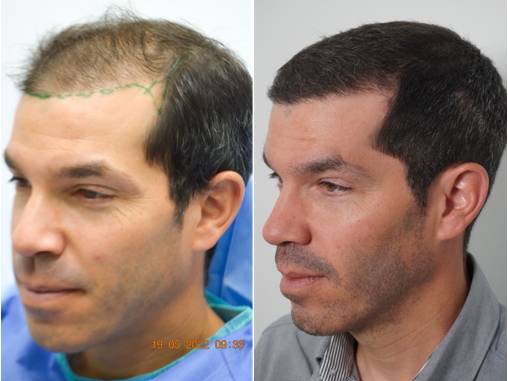Hair Transplant vs. Hair Replacement Systems: Which is Better?

It's more crucial than ever to feel and look your best these days. A significant portion of that depends on having the kind of hair you want, whether for job or for your personal life. The good news is that they don't have to live with anyone less than their ideal head of hair if their hair has thinned out over time owing to stress or other circumstances. A hair transplant and a hair replacement system are the two methods available to replace lost hair, and each has its own benefits. In this blog post, we'll look at their differences so you can decide which is ideal for you.
Understand the Difference Between Hair Transplant and Hair Replacement Systems
If you're looking to make your hair look fuller and healthier, but don't want the daily commitment of a wig, it's important to understand the differences between a hair transplant and a hair replacement system. Hair transplants involve surgically implanting individual follicles from one part of the scalp onto another in order to add volume or cover thinning patches. On the other hand, hair replacement systems are non-surgical options that involve either gluing a wig into place or sewing an attached piece of fake hair onto existing strands of real hair. Both come with pros and cons, so it's crucial to do some research before investing one way or another. Whether you decide on a transplant or a replacement system, you'll be sure to feel more confident rocking your new hairstyle!
Examine the Financial Cost of Each Option
When it comes to hair loss solutions, people often find themselves needing to choose between a hair transplant or hair replacement systems. Both of these options have their own advantages, but they also have associated costs that need to be considered. While a hair transplant is more of a one-time cost, the resulting care and follow-up treatment can be costly " and some people don't have the same results each time they go in for the treatment. Hair replacement systems also require regular maintenance and replacements every few months, making this a more financially demanding choice in the long run. Ultimately, each person needs to weight these factors carefully before making an informed decision about what works best for them.
Consider the Potential Side Effects of Each Option
Both have hugely positive potential outcomes but there are also potential side effects of both that must be considered. Hair transplants can result in pain, infection, itching, and temporary swelling; while, depending on the system used, a hair replacement too can cause irritation or an allergic reaction. Additionally, improper use of either option may lead to unsatisfactory results or even further hair loss. That's why it's important to consult with your doctor and do thorough research before deciding which option is right for you.
Decide on the Right Option For You and Your Goals
Deciding between a hair transplant and hair replacement systems can be intimidating, but it doesn't have to be. Both solutions offer the potential for renewed confidence and greater self-esteem; the trick is to figure out which one will work best for you and your individual goals. Before settling on an option, research each choice carefully, paying close attention to the procedures and caveats of each. Taking time to ask questions and seek information from medical professionals"including surgeons who specialize in surgery"will help ensure you opt for the right solution that works optimally with your particular circumstances.
It is evident that those seeking to regain their confidence and looks can find viable solutions in both hair transplant and hair replacement techniques. The FUE hair transplant offers a more long-lasting and natural alternative, whilst hair replacement systems can give a more cosmetic option for individuals who require immediate results. Which treatment is ideal for you should ultimately depend on your particular demands and preferences. Determining which course of action is best for you may be made clearer by speaking with a certified medical practitioner.
MORE



